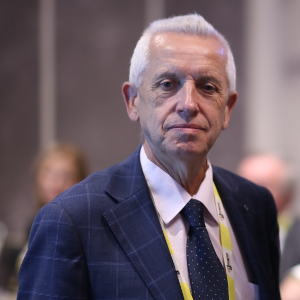Title : Application of metal single-site zeolite catalysts in catalysis
Abstract:
The metal ions well dispersed at zeolite framework are considered to be active sites of catalytic processes. Therefore, the incorporation of these metals into zeolites as isolated tetrahedral sites appears to be the important task. We have earlier shown that the incorporation of transition metal ions into vacant T-atom sites of framework zeolite is strongly favored when, in the first step, zeolite is dealuminated by treatment with nitric acid solution and then, in the second step, the incorporation of transition metal ions results in the reaction between the cationic metal species of the precursor solution and the SiO-H groups of vacant T-atom sites created by dealumination of zeolite. During my keynote talk the design of single-site zeolite catalysts with transition metal will be described and characterized by different physical techniques both at the macroscopic (XRD, BET, TPR, TEM) and molecular level (FT-IR, NMR, DR UV-Vis, XPS, EPR, XAFS). The application of metal single-site zeolite catalysts in environmental catalysis will be discussed. This two-step postsynthesis method applied in this work allowed obtaining metal single-site zeolite catalysts active in different catalytic processes such as oxidative dehydrogenation of propane into propene, selective catalytic reduction of NOx to N2, production of 1,3-butadiene or hydrogen from renewable sources, including ethanol obtained from biomass. Their catalytic activity strongly depended on the speciation and amount of metal incorporated into zeolite structure as well as their acidity.
Audience Take Away:
- The audience will be able to understand as control of preparation of catalyst systems.
- They will see that catalytic activity depend on dispersion of metal in the framework of zeolite.
- The researchers will be able, after my talk, do their own catalyst preparation using similar method.



